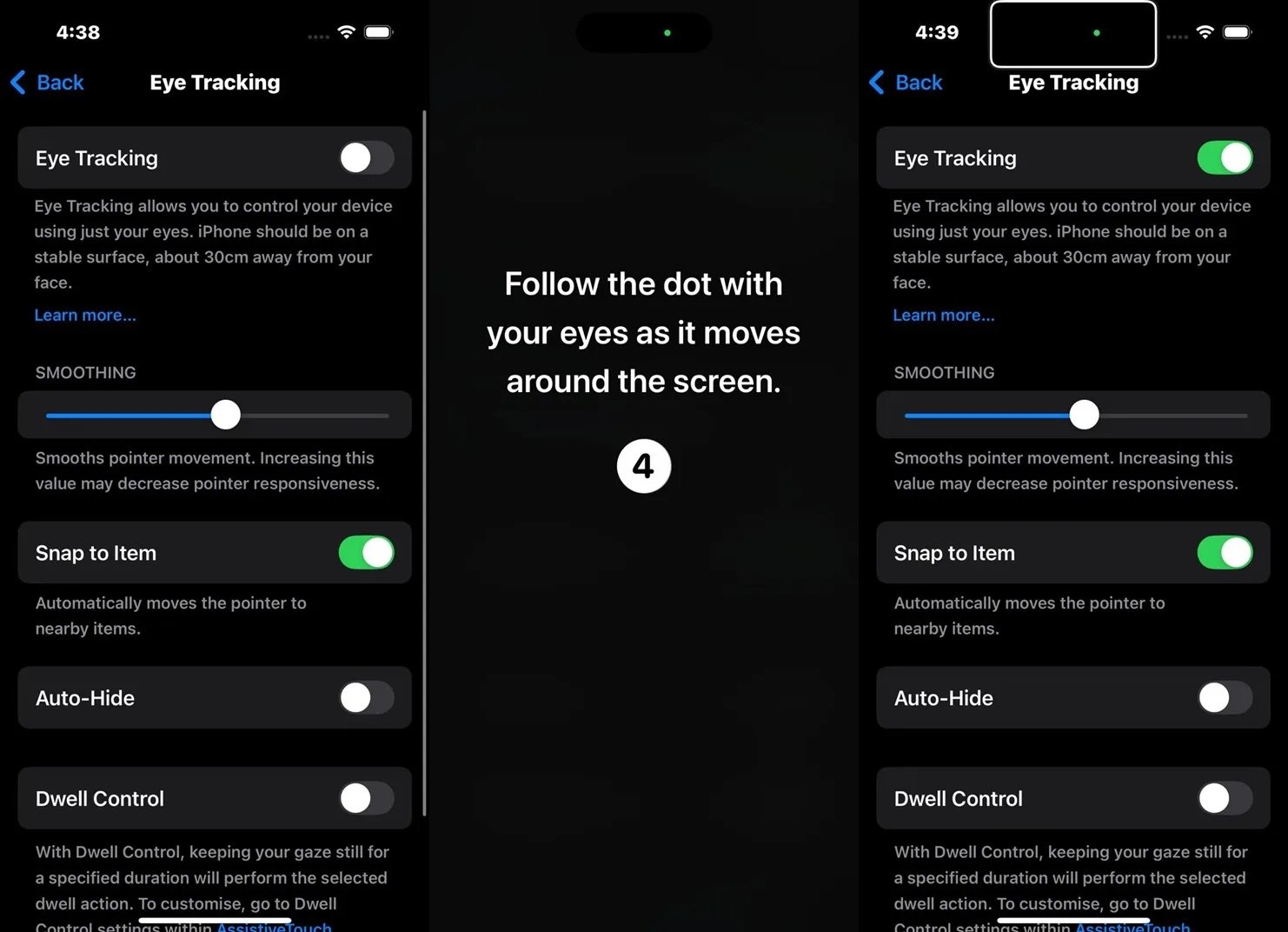How to Set Up Eye Tracking on iOS 18 Beta for iPad and iPhone
In my previous blog, "Apple Sets New Sights on Accessibility: A Deep Dive into iOS 18’s New Features," I discussed the exciting new accessibility enhancements that Apple is rolling out with iOS 18, which is slated for full release in mid-September. One of the most groundbreaking additions is the 'Eye Tracking' feature, currently available in the iOS 18 Beta. This feature allows you to control your iPhone using just your eye movements. Here’s how you can set it up.
The feature is available in iOS 18 beta 3. (Express Photo)
1. Prepare Your Environment
Place your iPhone on a flat surface, about half a metre away from your face.
Ensure the Face ID camera is clean.
Make sure the room is well-lit, but avoid positioning the camera directly facing a light source to ensure optimal eye-tracking performance.
2. Enable Eye Tracking
Open the Settings app on your iPhone.
Scroll down and select Accessibility.
Under the Physical and Motor section, tap on Eye Tracking and toggle it on.
3. Calibrate the Feature
After enabling Eye Tracking, you’ll be prompted to follow a series of dots on the screen with your eyes.
This calibration process ensures that your iPhone accurately tracks your eye movements.
4. Customize Your Experience
Once Eye Tracking is set up, you can fine-tune it to suit your preferences.
Smoothing Slider: Adjust the speed of the pointer for smoother control.
Snap to Item: Enable this option to automatically move the cursor to nearby items.
Dwell Control: Turn this on to select items on the screen by gazing at them for a set amount of time.
5. Start Using Eye Tracking
With everything set up, you can now navigate your iPhone using your eyes. Whether it’s scrolling through apps or selecting options, Eye Tracking offers a hands-free way to control your device.
Tips for Best Performance
Maintain a steady position to ensure the Face ID camera consistently tracks your eye movements.
Experiment with the customization options to find the settings that work best for your needs.
Stay tuned for more insights as we approach the full release of iOS 18 in September, where these accessibility features will be available to everyone.
